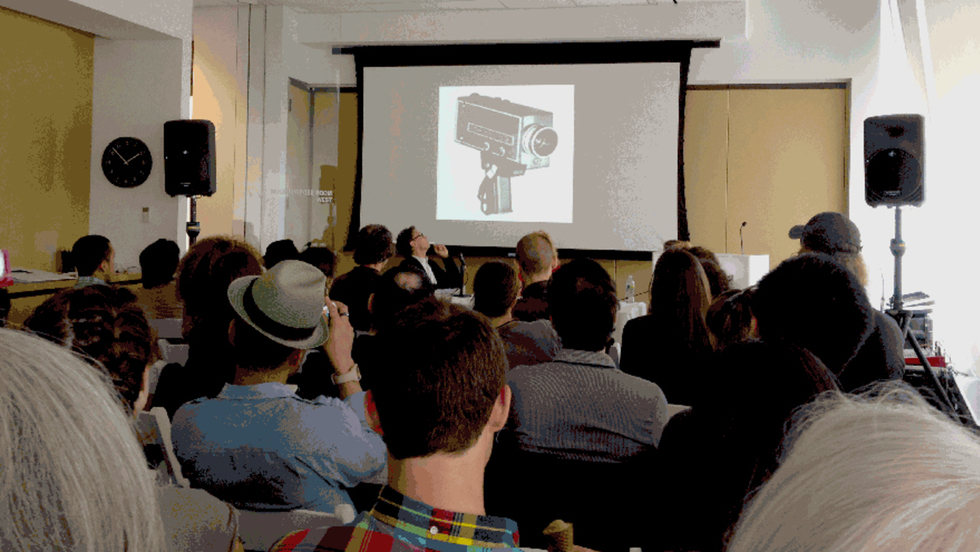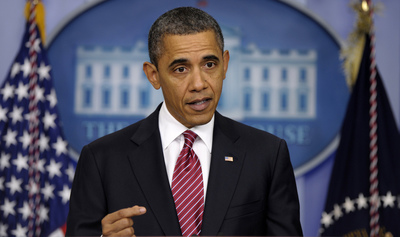
BY AMANDA MCCORMICK |
Get Their Attention: 5 Ideas for Memorable Digital Outreach from Vimeo Fest and Beyond
From inventive micro-funding incentives to blogging to interactive distribution, creative consultant Amanda McCormick shares innovative ideas on developing stand-out experiences around your next digital masterpiece.

The Vimeo Festival & Awards (which wrapped its second edition on Saturday, June 9) is definitely not your average film festival. Technology panels are interspersed with workshops on lighting, sound and editing; videos often run in the sub-five-minute range; and unpacking the unique challenges of being a maker in the digital age is always at the foreground of conversation. Which is to say that the focus is pretty much everywhere but the classic 90-minute-ish film you’d see in the movie theater.
“Limited Editions in the Digital World” was one session I watched with avid interest. It featured Museum of Modern Art curator Barbara London and video artist Marco Brambilla, talking about the peculiar challenges of applying notions of “collectability” to digital works when YouTube and Vimeo make video so ubiquitous.
Coming from the fine art world, they were interested in cultivating scarcity. As someone who provides digital strategy consulting to creative individuals, nonprofits and small businesses, my hunch is that the scarcest commodity of all these days is attention.
It’s not enough anymore to simply put out a great product. Your audience has more choices than ever before. How do you stand out when basically everyone who can master Tumblr or WordPress has a megaphone just as loud as yours?
There are ways to introduce an element of “specialness” or collectability around your film—but the thing you give your audience to “hold on to” is frequently more experiential than physical. Creating that “stickiness” requires a complicated combination of timing, creativity and luck. Here are a few of my favorite approaches:
From Movie to Movement (or Vice Versa)
As an illustration of the inexact science of a video “going viral,” KONY2012 was an extraordinary success. And regardless of how you feel about the merits of the film, creative or otherwise, the increasing hybridization of digital media, social media, filmmaking and social activism is certainly a force to be reckoned with.
But the mistake many people make when looking at KONY2012 is thinking that the movie made the movement. In fact, the movie’s rapid success was built of the strategic activation of various grass-roots networks that had been cultivated for years. It’s better to think of KONY2012 as an example of what’s likely to become an increasingly common synergy between a filmmaker’s vision and a social movement.
The Bully Project is another way of looking at the phenomenon of activism-slash-filmmaking. With a film that touched on an issue that affects pretty much everyone, the Weinstein Company’s marketing team wanted to make sure that the distribution of the film made it clear it was more than a movie. Therefore, sending a tweet in support of the film asked the audience to go beyond just “liking” the film itself. To Tweet about Bully was to join the cause.
So consider whether you can mobilize social activists around some portion of your film or project. Start even earlier by partnering with an advocacy group or nonprofit to produce a film.
The Shiniest Lure
When I take my dog to the park, she’s faced with thousands of amazing distractions. Squirrels, smells, mud, the enormous expanse of Prospect Park’s Long Meadow. Because I am pretty much convinced that she is part dingo, I’ve had to become extremely creative with giving her incentives to come back to me during off-leash hours. Kibble? Just not going to cut it. She wants bacon, steak scraps, plus a little party when she returns from whatever little diversion has sparked her interest.
As Kickstarter has become more and more popular, people who think they can attract donors with a bit of kibble are going to be increasingly out of luck. I know that recently Sundance Institute has begun outfitting filmmakers with Kickstarter “coaches,” which makes a lot of sense. It's getting competitive out there.
The recently funded campaign for The Canyons is a great example of creative rewards. Yes, the project had celebrity cachet, as it involved two titans of publishing and indie film: Bret Easton Ellis and Paul Schrader. But this duo didn’t rest on their laurels as writers of some landmark works of recent American pop culture. They hustled their way into some extremely inventive rewards, such as getting to go work out with Bret and his “celebrity trainer” or getting script notes from Paul Schrader.
The beauty of Kickstarter, said artist Marco Brambilla, is that “You are less beholden to any one person.” Did you know that the largest share of donors to musician Amanda Palmer’s extraordinary million-dollar Kickstarter campaign paid in at the $25 dollar level? Listen, if those people are going to keep you from having to answer to The Man, you ought to lavish them with your love and attention. For just $10, funders of The Canyons were able to get involved with the casting, thus strengthening their connection to the film. So get creative on even the lowest rewards.
The Journey, Not the Destination
Your film—it needs a website. This is a given that we all know by now. Yet the mistake I see a lot of creative people making is thinking that a website exists solely to promote the film’s opening. I think it’s much better to think of the website as a companion piece to the film, an added dimension.

The website for the independent film Like the Water is a perfect example of how to use the web to draw your audience into the journey. We’re so used to listening to filmmakers at the end of the arduous process of filmmaking doing interviews proclaiming how “worth it” all was. Much less common is a close-up view of how challenging making a film can be. On the Like the Water site, you get to read pieces from the co-writer and producer, among others, exposing their fears and doubts about their ability to accomplish such an ambitious undertaking.
The ultimate effect? Seeing the process, imperfections and all, makes the project that much more indelible to me as a potential audience member. Even before the movie arrives, I feel invested in it. So while it may require a little extra time and effort (and let’s face it, guts), take the time to build the journey for your audience through blogging about your creative process.
Change the Container
Movies are built on the three-act structure—they need to have a beginning, middle and end, right? This bedrock was drilled into me at film school, and later, as a script analyst for Miramax.
Yet with an environment where we increasingly share almost everything on social networks comes a lot more lenses trained on everyday life. So how can we shift the container for our films to make them more like life—more episodic, and more freewheeling? I recently met an NYU ITP grad named Fernanda Bak who is using a new platform called Klynt to distribute her interactive documentary How Yoga Helped Me Get Over Woody Allen .
Visiting her site is a much more immediately immersive experience than surfing over to one of the video sharing sites. Part vlog and part transmedia experiment, her online documentary asks the viewer to put the pieces together. And in the multitude of story branches is the tantalizing possibility: what if the story never ends?
The ubiquity of online video causes us to apply a lack of care to the way it is distributed: “Just slap it up on YouTube and pray for hits.” Think about carving a different path for the display of your online video by choosing a unique or emerging platform.
Paywall for Participation
On the Internet, people expect things to be free. But that doesn’t mean you can’t ask someone to “pay” with something other than cash for access to your lovely masterpiece.
A few ideas that I like and are relatively easy to implement: pay for access by giving me your email address, by Tweeting or sharing something on Facebook or by answering a question.
In marketing, we typically think of these things as “lead generation” techniques, but you’d be surprised how, by putting up the lowest barriers and asking people to make an investment of themselves, you are making your mark.
These are just a few of my favorite examples of carving out memorable experiences to spark an investment of time or attention from your audience. I’d love to hear some of yours in the comments.
And if you missed Vimeo Fest, be sure and check out their site, where many of the conversations are up online.

